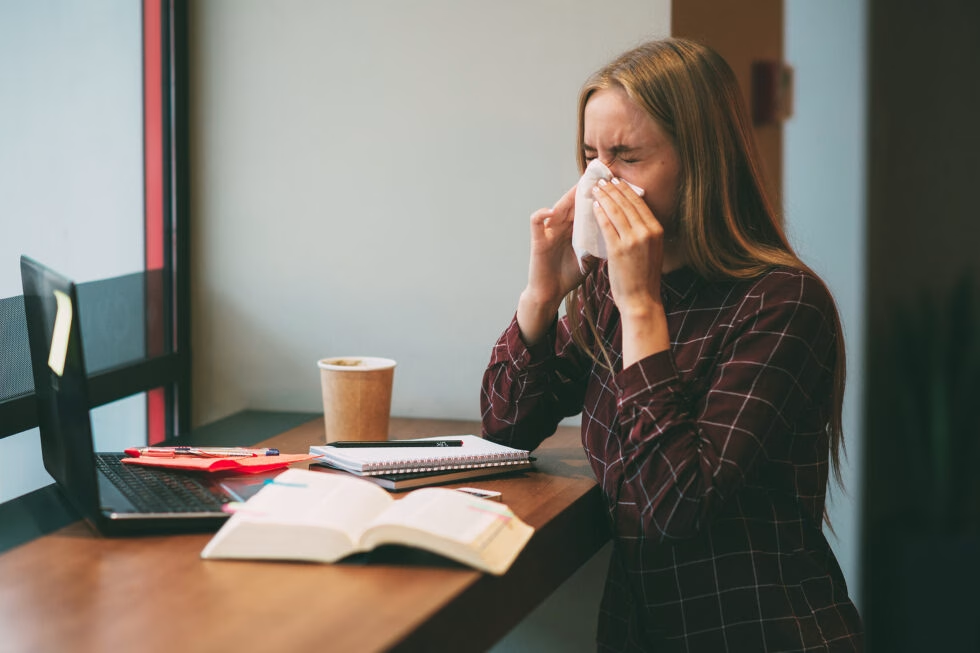
Wondering if you have athlete’s foot or something else? Learn about the symptoms, treatment options, and prevention tips to keep your feet healthy and fungus free; as well as learning about some other common issues that could be causing your foot issues.
Being active by working out, playing softball, or swimming at The Statesville Fitness & Activity Center or hiking one of the many trails around Statesville are some of the best things you can do for your health. However, you could find yourself suffering from conditions like athlete’s foot which could make being active a lot more difficult than it should be.
Athlete’s foot, also known as tinea pedis, is a common fungal infection that affects the skin on the feet. It’s characterized by itching, burning, and cracked skin; particularly between the toes. If you’ve ever experienced these symptoms, you might be wondering if you have athlete’s foot. This blog post will help you identify the signs and symptoms, understand the causes, and learn about effective treatments and prevention methods as well as determining if you have athlete’s foot or another skin ailment.
Visit AFC Urgent Care Statesville today.
Common Symptoms of Athlete’s Foot
- Itchy white patches between the toes
- Scaling, peeling, or cracked skin
- Skin looks red or brown on the affected area
- Itchiness, burning, or stinging; especially when you remove your socks or shoes
- Dry, scaly skin on the bottom or side of the affected foot
If you notice any of these symptoms of Athlete’s foot, you can contact AFC and book an appointment for expert treatment and care.
Quick and Effective Treatment Options for Athlete’s Foot
Treating athlete’s foot promptly is key to preventing the infection from spreading or worsening. Here are some effective treatment options:
Over-the-Counter Antifungal Treatments
For many mild cases, over-the-counter antifungal creams, sprays, or powders can effectively treat athlete’s foot. These treatments are applied directly to the affected areas and work by killing the fungus and relieving symptoms like itching and burning. It is important to use these products as directed and continue treatment until the infection is completely cleared.
Prescription Medications for Stubborn Infections
If your athlete’s foot is more severe or doesn’t respond to over-the-counter treatments, an AFC provider may prescribe stronger antifungal medications. These might include topical creams or gels that are more potent or oral medications that address the infection.
Home Remedies for Symptom Relief
While home remedies are not a substitute for medical treatment by an AFC provider, some can provide symptom relief. Soaking your feet in apple cider vinegar or applying tea tree oil may help reduce the fungal load and alleviate itching. However, these remedies should be used alongside, not instead of antifungal treatments for best results.
Proper Foot Care and Hygiene
Maintaining good foot hygiene is crucial for both treating and preventing athlete’s foot. Wash your feet daily with soap and water, making sure to dry them thoroughly, especially between the toes. Wearing clean, dry socks and choosing breathable shoes can also help keep your feet from fungal infections.
Can Athlete’s Foot Spread?
Yes, athlete’s foot is spread by a fungus that loves damp, humid places such as public showers or pool areas. It can also be transmitted by touching an affected foot or the use of any contaminated belongings (such as athletic shoes or socks) from an affected person.
If the individual has an active fungal infection on the feet, it is contagious and can spread from person to person easily. Therefore, if you have athlete’s foot or are at higher risk of developing a fungal infection, you need to be cautious and practice healthy foot hygiene by avoiding warm and damp environments.
What Could it Be Besides Athlete’s Foot?
There are many other skin issues that could be causing problems with your feet. Some will have similar symptoms to athlete’s foot and others will not. This is why it is so important for an AFC provider to look at and diagnosis your symptoms. Walk in or book an appointment today to be seen by our providers.
Other Common Foot Issues:
- Eczema or Psoriasis
- Plantar Warts
- Blisters
- Corns or Calluses
- Dry cracked skin or heels
- Bunions
Prevention Tips:
- Wear Shower Shoes. When using public spaces such as locker rooms, showers, and around swimming pools; make sure to wear shower shoes.
- Keep Your Feet Dry. After bathing, make sure to completely dry your feet. Do not reuse socks if they are damp before washing and change socks often.
- Choose Breathable Footwear. Wear shoes made of breathable materials and avoid tight-fitting shoes that trap moisture.
- Alternate Shoes Often. Give your shoes time to dry, especially after exercising by alternating pairs of shoes.
- Avoid Sharing Personal Items. Do not share items with others that can spread the fungal infection that causes athlete’s foot; such as towels, socks, or shoes.
If you are experiencing itching, burning, or rash on your feet, you might have athlete’s foot. Understanding the signs and symptoms, as well as seeking prompt treatment, can help you manage the condition effectively. By following preventative measures, you can reduce your risk of developing athlete’s foot and keep your feet healthy. If you suspect you have athlete’s foot, visit our local urgent care center for a professional diagnosis and appropriate treatment.

